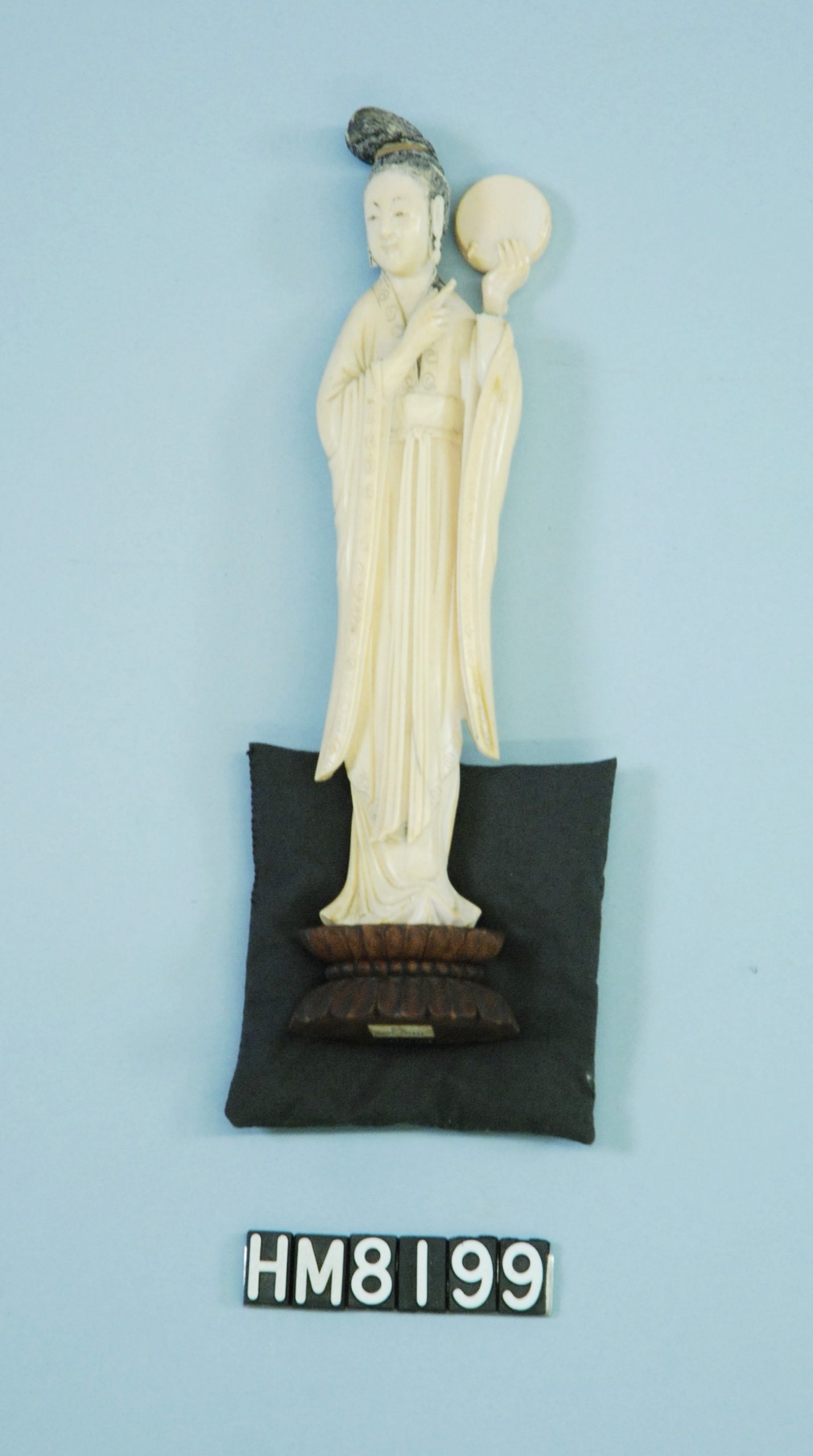The Art of China

This assemblage of traditional Chinese artforms was brought back by Maine mariners, world travelers, and other stationed in China prior to World War II. Some represent ancient traditions such as embroidered silk clothing of the elite, jade and soapstone carvings, and porcelain ceramic traditions; as well as items made specifically for export in styles and designs made for Western markets.
Other items represent Buddhist deities, such as Guanyin, Goddess of Mercy and Compassion and protective devices such as Foo Dogs or Guardian Lions that guard dwellings and ward off evil spirits
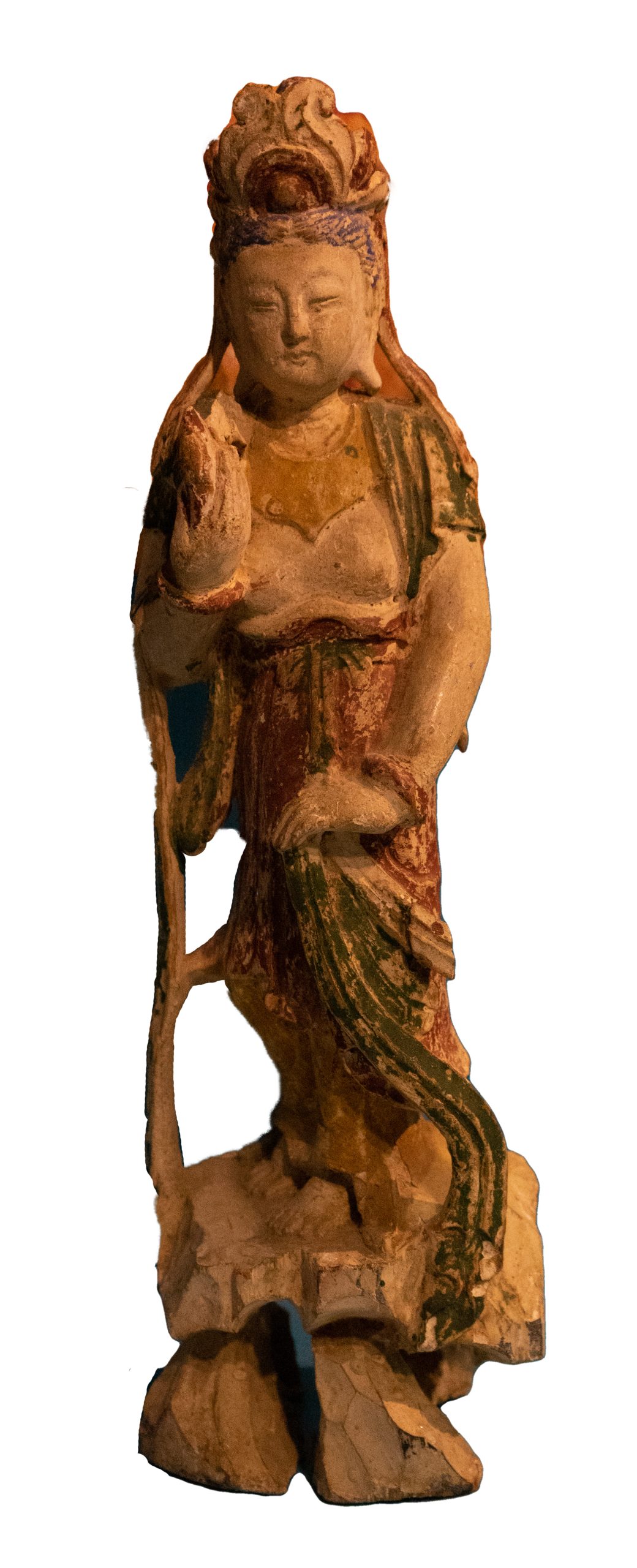
Chinese Carved and Painted Statue of Guanyin
20th Century
Guanyin is the Goddess of Mercy.
Anonymous Lender
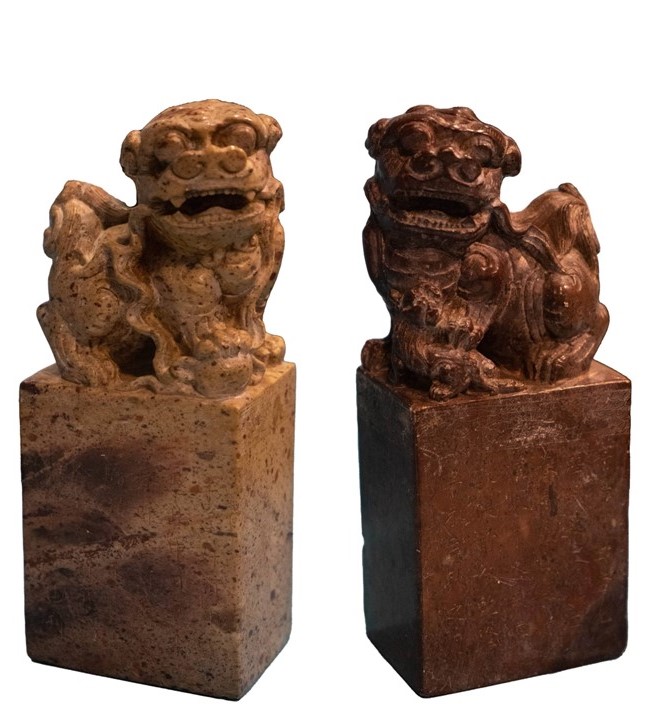
Chinese Foo Dog Chops
20th Century
Foo Dogs were generally made in pairs, with the male depicted with a ball and the female with a cub. They were believed to protect buildings from harmful spirits and threats.
Anonymous Lender
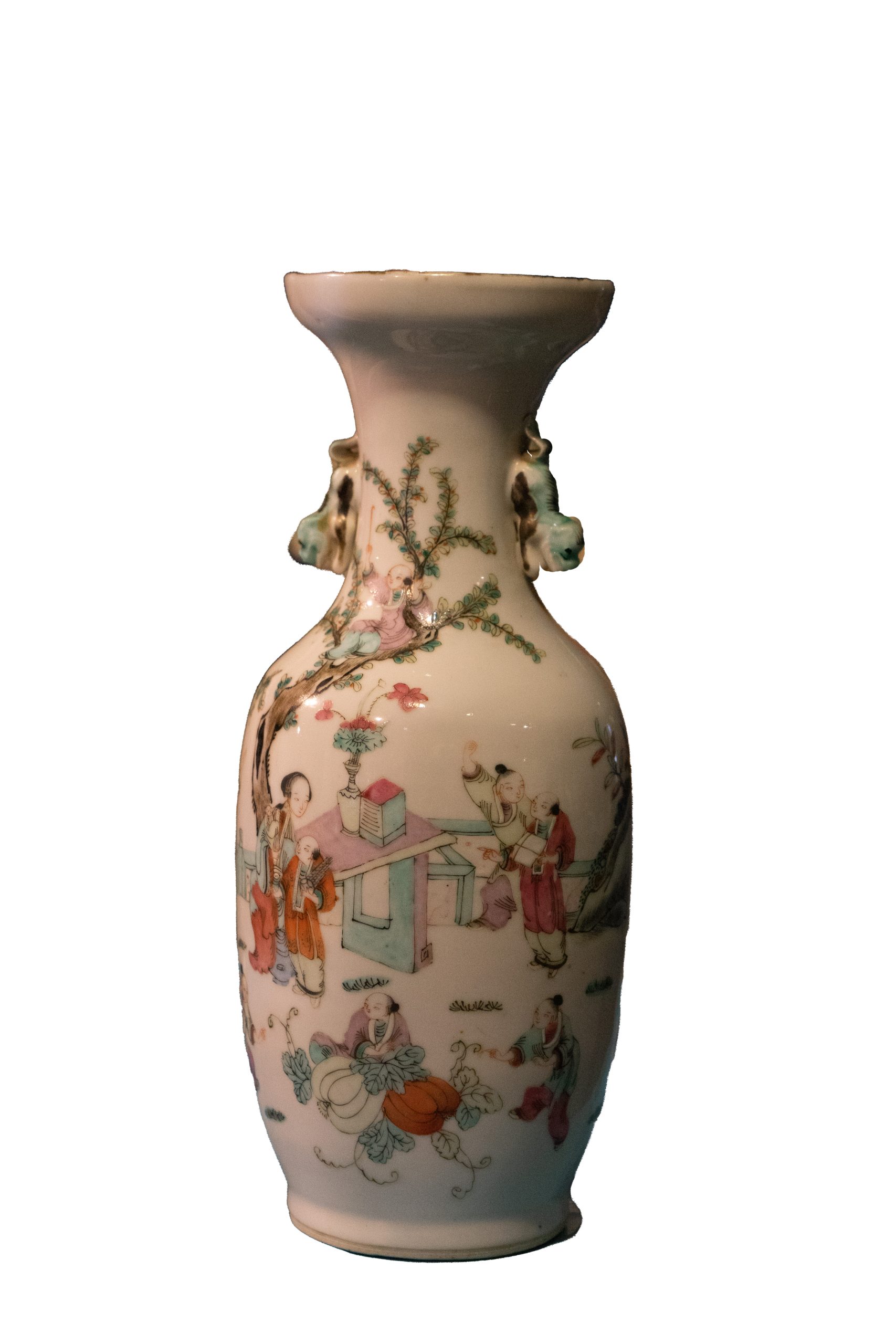
Chinese Export Porcelain Vase with Foo Dog Handles
19th or 20th Century
Chinese porcelain was highly coveted and made specifically for export to Europe and the Americas.
Anonymous Lender
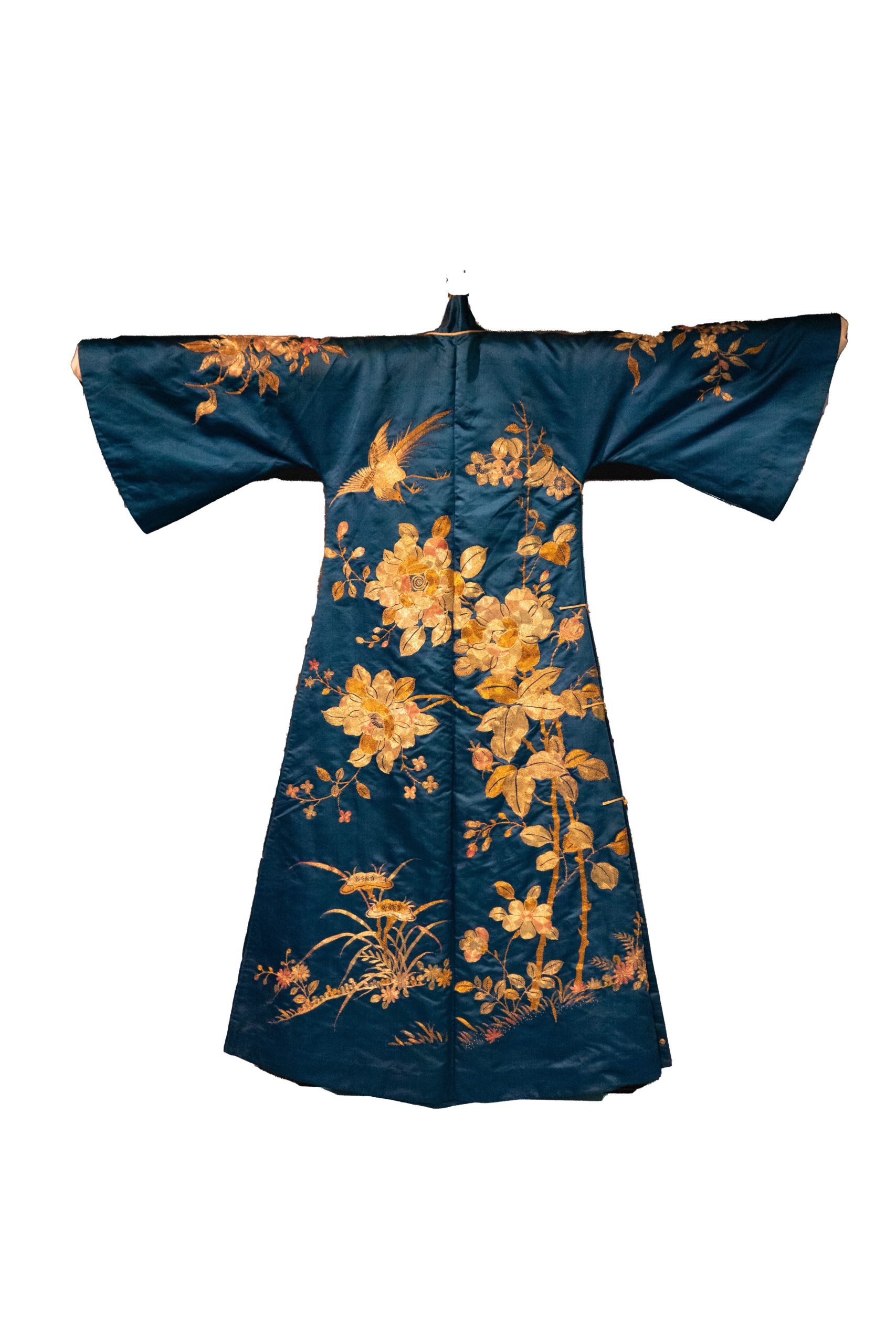
Chinese Silk Chongsam
20th Century
A traditional Chinese dress which is derived from ethnic clothing of the Manchu people.
Anonymous Lender
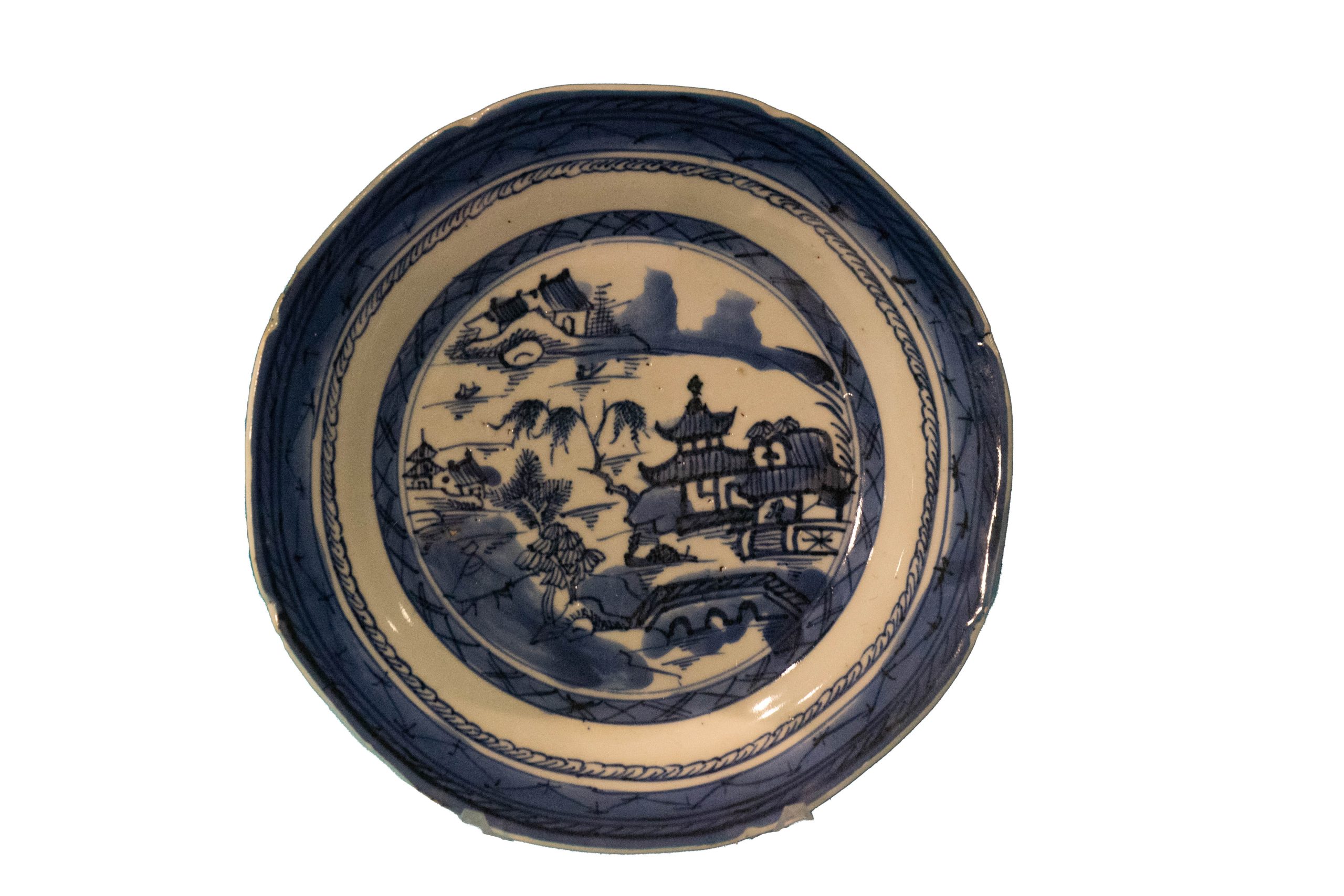
Canton Export Porcelain
c. 1785-1835
This blue-on-white decorated porcelain was the most common form of Chinese ceramics exported to the United States.
Anonymous Lender
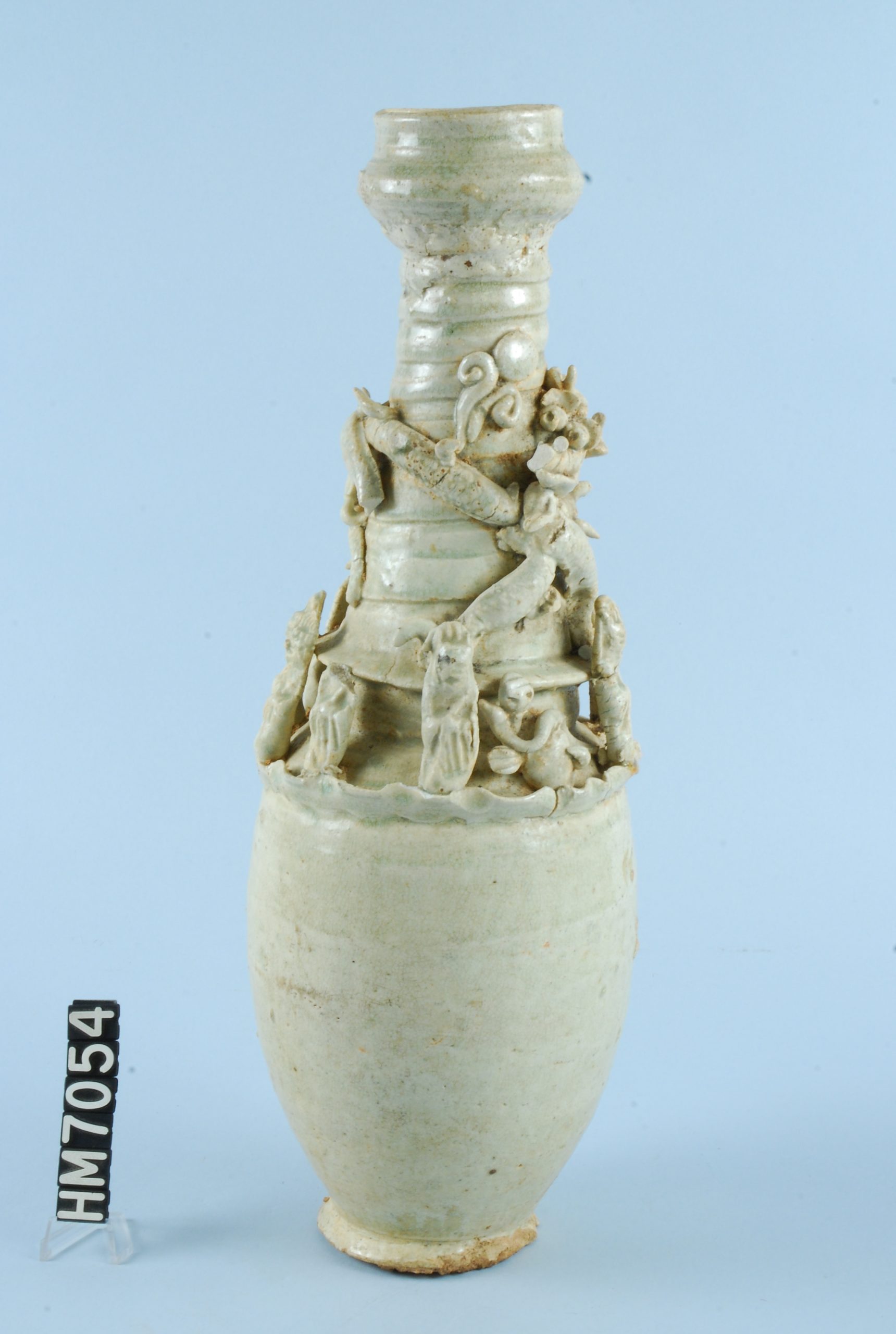
Chinese Hunping
Late Third Century
These vessels were traditionally made without lids and featured molded figures and animals in a tiered arrangement around the upper portion of the jar. They were most likely placed in the tomb as a place for the soul of the deceased to reside.
Phyllis Sommer and Nancy Prince Collection
(HM7054)
Chinese Ivory Figurine
20th Century
This figurine was collected by J. Russell Hudson, the Hudson Museum’s namesake, during a visit to China in the early 1900s.
J. Russell Hudson Collection
(HM8199)
Chinese Ivory Figurine
20th Century
This figurine was collected by J. Russell Hudson, the Hudson’s namesake, during a visit to China in the early 1900s.
J. Russell Hudson Collection
(HM8200)
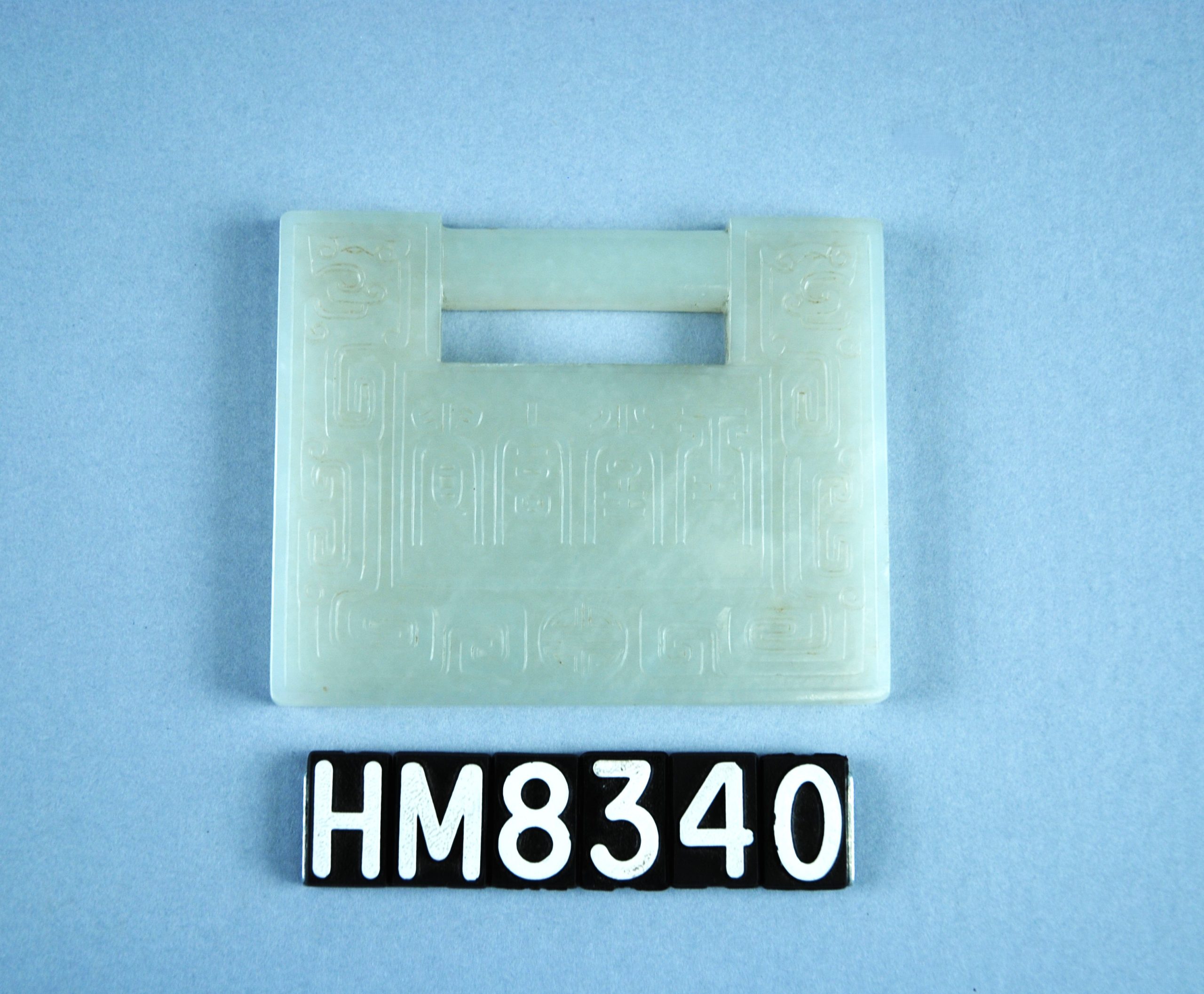
Chinese Celadon Jade Spirit Lock
Qing Dynasty
Spirit locks were worn on the back of a necklace to ward off evil spirits.
J. Russell Hudson Collection
(HM8340)
Chinese Jade Bi Disks
Qing Dynasty
These disks were used as status symbols to ensure luck.
J. Russell Hudson Collection
(HM8343)
Chinese Jade Bi Disks
Qing Dynasty
These disks were used as status symbols to ensure luck.
J. Russell Hudson Collection
(HM8348)
Chinese Jade Bi Disks
Qing Dynasty
These disks were used as status symbols to ensure luck.
J. Russell Hudson Collection
(HM8344)
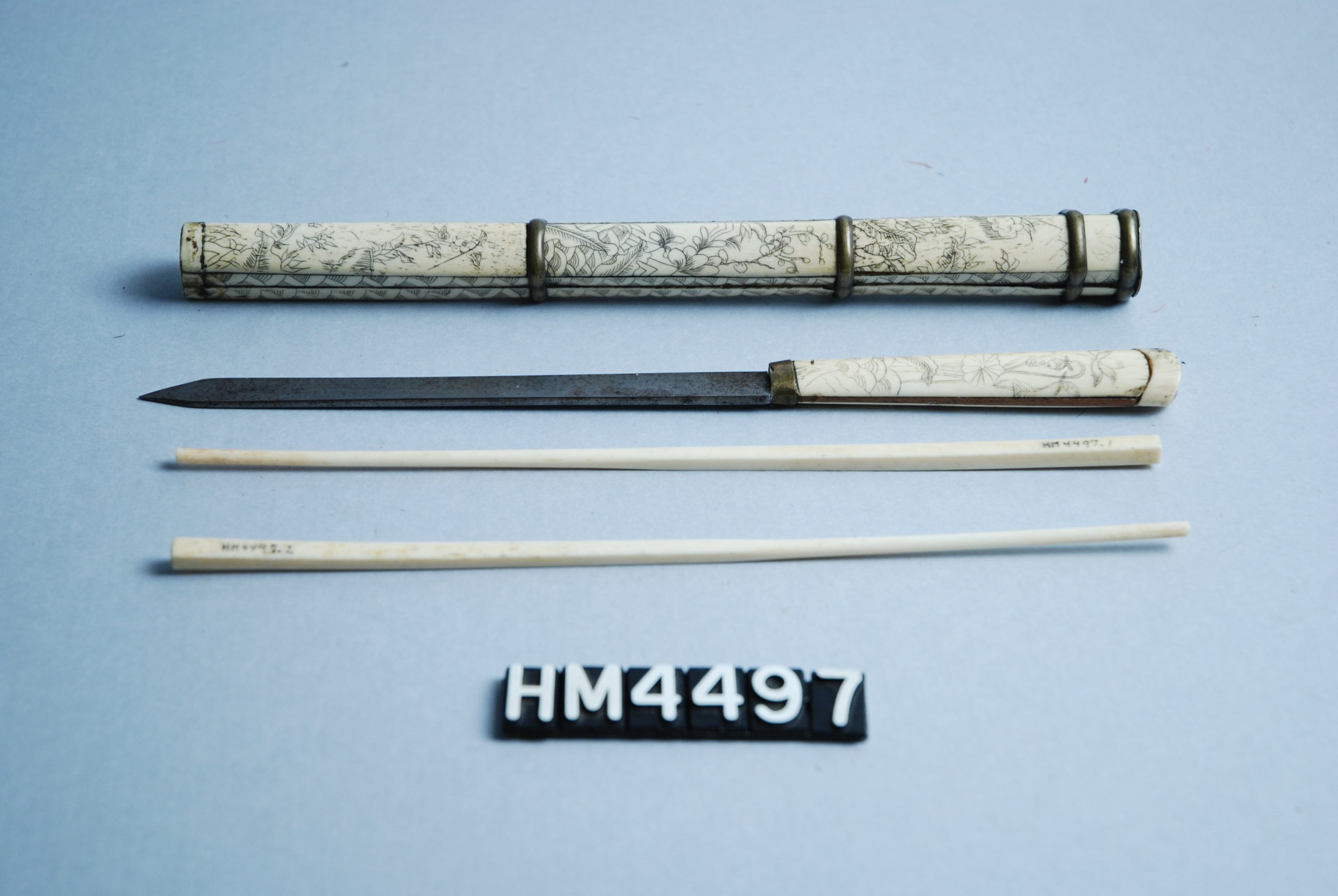
Chinese Trousse Set
19th Century
This set consists of a knife and chopsticks designed for use while traveling.
(HM4497)

